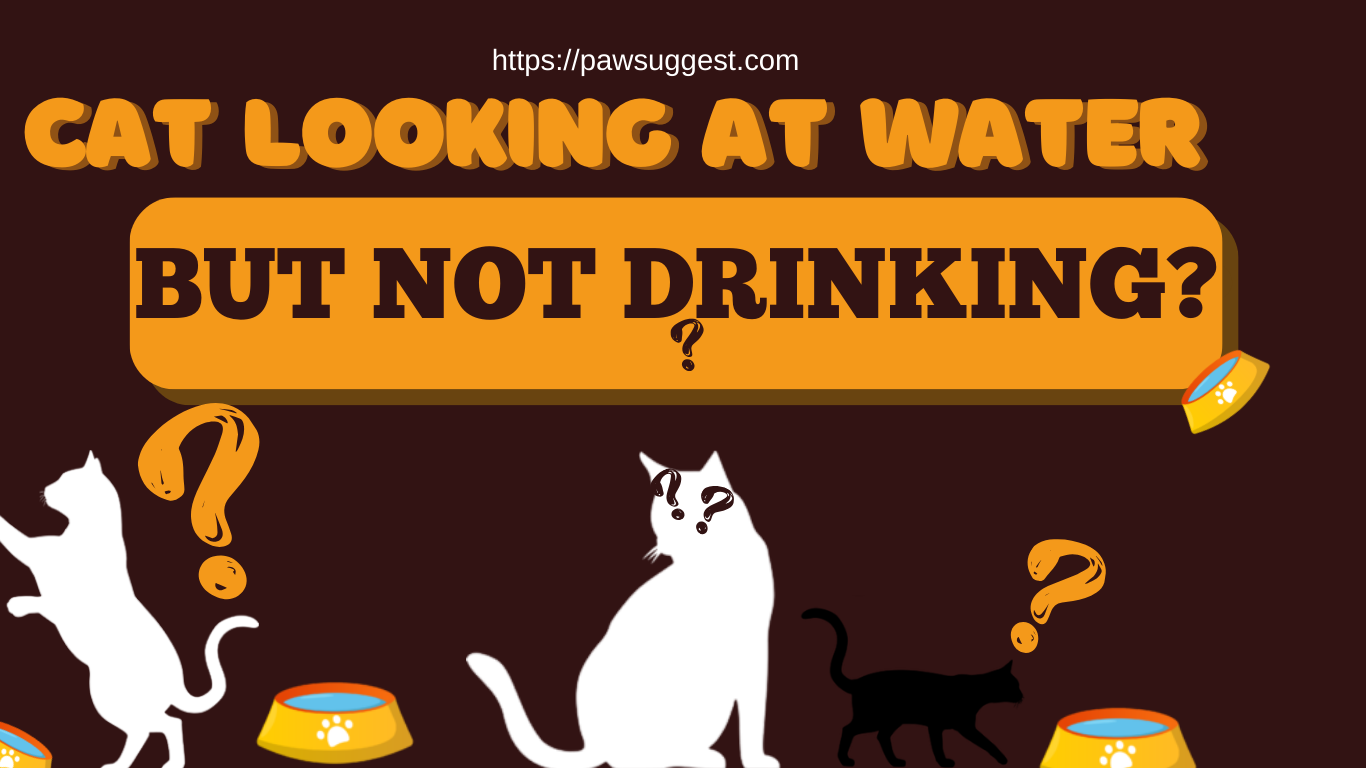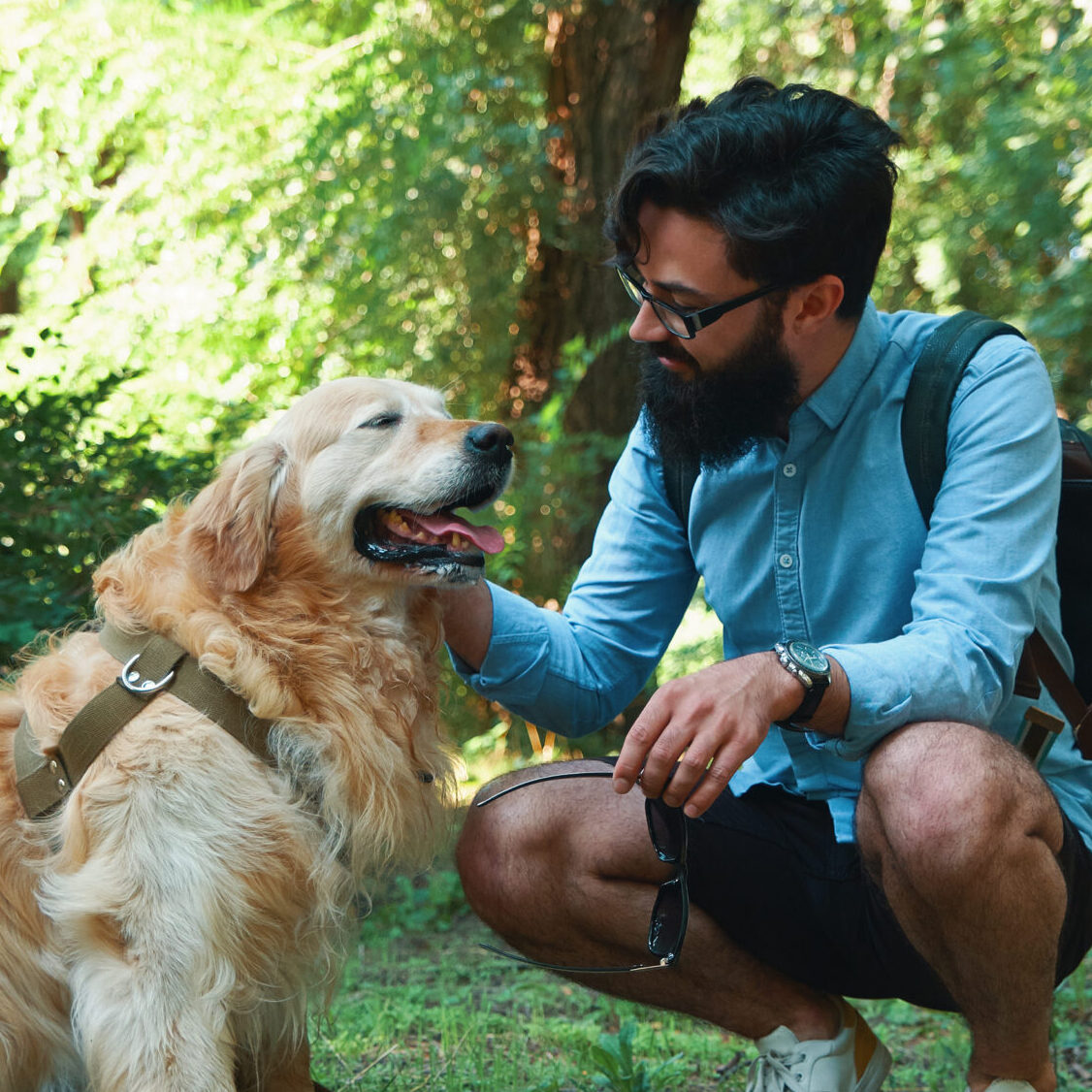Have you ever caught your cat fixated on their water bowl, staring, yet not taking a sip? You’re not alone. Many cat owners are puzzled by this quirky behavior.
Why is my cat looking at water but not drinking?

This peculiar habit raises questions about their hydration and overall health.
So, why do cats engage in this seemingly odd behavior? Read on to get the answer to this question!
Why Is My Cat Looking At Water But Not Drinking?
It’s critical for your cat’s general health and well-being that they stay hydrated. Animals generally drink when thirsty, and each species has a different requirement for water to stay hydrated.
Therefore, even while it appears your cat hasn’t been drinking much water, they might actually be well-hydrated. Cats only need modest amounts of water, but they always drink it.
Your cat might not need to drink as much water as you believe because they don’t need as much per kilogram as other larger animals. While cats require less water than other animals, there may still be situations where your cat isn’t getting enough to drink.
If your cat isn’t drinking water, it’s time to look into it. Usually, cat owners ignore when their cat stops drinking enough water, but they should never ignore it. Because dehydration can even lead to changes in the nose color of cats. Hence, we’ll talk about potential underlying medical conditions later in the sections below.
Signs That Your Cat May Be Dehydrated
Your cat’s health is seriously threatened by dehydration. Dehydration can strike cats who don’t drink enough water. Here are some methods to see if your cat is perhaps dehydrated.
1. Skin Elasticity
Gently compress the excess skin between your cat’s shoulder blades to create a tent-like shape in order to examine their skin. Your cat’s skin should return to normal in less than a second after you release her. Your feline companion may dehydrate if your cat’s skin doesn’t immediately snap back.
2. Sunken Eyes
Examine your cat’s eyes closely. Dehydration could be the reason for your cat’s unfocused, sunken, or dull eyes.
3. Dry Mouth
Check out your cat’s gums. The gums of your cat should be pink and wet at all times. If you push your finger against your cat’s gums, the area you press will turn white; however, if your cat doesn’t go back to normal pink color in a minute or two after you remove your finger, they might be dehydrated.
4. Constipation
Check the litter box. Cats frequently have constipation when they are dehydrated. You can suspect dehydration if your cat hasn’t been pooping as much as usual. Meanwhile, constipation can be treated using Vaseline on cat’s bum.
5. Panting
Cats don’t pant very often, unlike dogs. Your cat can be dehydrated if they are panting.
What Causes Dehydration in Cats?
If your cat’s drinking habits abruptly change, it could be that they’re not feeling well. The following conditions could cause your cat to become dehydrated:
- Diabetes
- Liver disease
- Gastrointestinal discomfort (vomiting or diarrhea)
- Periodontal disease
- Heatstroke
- Hyperthyroidism
- Cancer
- Kidney disease
It’s important to take low water consumption seriously, regardless of the underlying reason. Taking your cat to the doctor if it goes 48–72 hours without drinking is necessary – If there are other worrying signs along with the change in drinking habits.
Details on food and water intake, potty habits, and other behavioral changes should be reported to your veterinarian.
Why is my cat not drinking water?
When a cat quits eating or drinking, it frequently happens for the following reasons:
A relatively innocuous explanation, such as if they simply don’t like where you’ve put their bowl, or a sign of a more serious ailment for which you should visit a veterinarian right away.
Let us now address a few less dangerous causes of a cat not drinking water. There are a few reasons your cat could be reluctant to drink:
- How much they’ve already consumed for the day (from sprinklers in your neighbor’s yard or anywhere else)
- They might have licked something they shouldn’t. Learn more about this topic right now!
- The state of cleanliness of their water bowl
- What is their water bowl’s potential material
- The location of your cat’s water bowl
- If you’ve switched your cat’s diet from dry to wet food,
- How active your cat is (or hasn’t been; a less active cat would just require less water overall)
- How warm it is outside right now
- If they’re healing from a medical procedure
- What is the age of your cat?
How Much Water Should a Cat Drink?

According to the Committee on Nutrient Requirements of Dogs and Cats, cats should have one ounce of water for every half-ounce of dry food consumed. Most veterinarians advise a healthy cat to drink 4 ounces (or ½ cup) of water for every 5 pounds of body weight each day.
The amount of water that each cat needs varies based on their diet and underlying health issues. Cats frequently drink water from faucets, other pet bowls in the home, wet/canned food, and other sources.
So, you can measure the precise quantity of water added to the water bowl at the start and end of each day to monitor how much they are getting.
Frequently Asked Questions (FAQs)
1. Why won’t my cat drink when it just stares at the water?
There are a few typical reasons why your cat might not want to drink water. Kidney disease is one of the most prevalent, and it can make cats queasy and prevent them from drinking.
2. Why is my cat staring at the water all the time?
Cats, like many other creatures, are naturally drawn to water because it is necessary for their survival. You can keep a sick cat close to its water bowl so it stays hydrated.
3. Why is my cat avoiding water?
Some typical causes of your cat’s refusal to drink are underlying medical issues, unclean water, where the bowl is placed, or outside stressors (like moving or bringing in a new pet).
Summary
In a nutshell, a cat looking at water but not drinking it can stem from various causes, ranging from instincts to health concerns.
By observing your cat’s behavior and making simple adjustments, you can help ensure they stay hydrated.
Remember, when in doubt, it’s always best to consult your veterinarian to rule out potential health issues.
Keeping your feline friend happy and hydrated is just a sip away!

